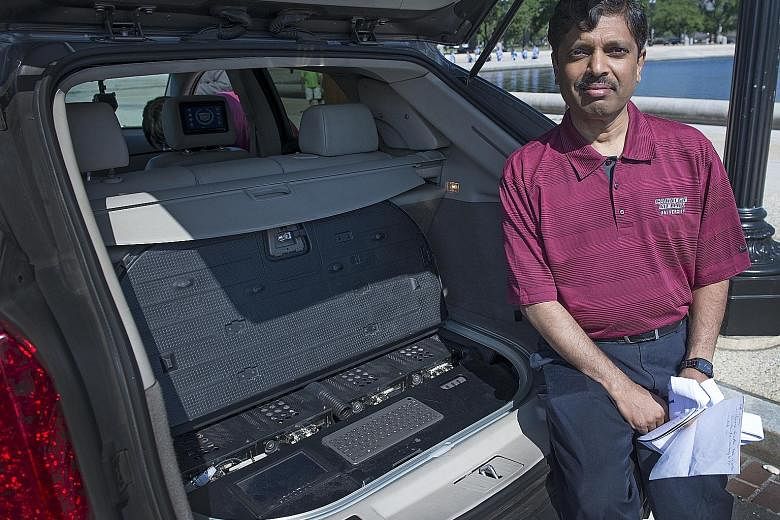WASHINGTON • Cars capable of driving themselves may be on the showroom floor sooner than you think, but whether they should come with all the current essentials - including a steering wheel and pedals on the floor - has the auto industry at a fork in the road.
Ford sided with the pioneering engineers at Google last week in announcing plans to introduce limited-use vehicles without traditional controls within five years.
Some other major automakers - and virtually all of them are well along in their work on self-driving vehicles - say they will introduce automated elements one step at a time, until drivers accept that they no longer need to control their cars.
The different approaches are rooted in conflicting views of safety and what the public is willing to accept.
"It's almost like asking people before they even really knew what an iPhone was, how the iPhone might change their lives," said Dr Johanna Zmud, senior research scientist at the Texas A&M Transportation Institute.
Tesla, which has been aggressive in rolling out limited automated steering and similar features, made headlines this year when one of its cars was involved in a fatal crash.
Although the car's "autopilot" system was far from fully autonomous, and the crash is still being investigated, the death of its driver seemed to underscore worries about the transition to self-driving cars. Tesla said "neither autopilot nor the driver noticed the white side of the tractor-trailer against a brightly lit sky, so the brake was not applied".
"This to me is the crux of the problem," said Dr Raj Rajkumar, a Carnegie Mellon University professor who has been on the leading edge of autonomous-vehicle technology.
"On one side, you have humans who become too comfortable and stop paying attention. The other side of the equation is that the technology for vehicles to drive themselves is just not mature enough."
A Stanford University study indicated that distraction "may make transitions to driver control more difficult" and that "drivers may sleep for significant periods on long journeys, increasing the difficulty of rousing them and having immediate engagement".
Dr Rajkumar said he is more convinced than ever that introducing safe-driving features - lane-departure warnings, cameras and sensors - gradually is the prudent path.
"We are able to drive only because we have common sense when it comes to things we've never seen before," he said. "But computer software does not have that level of cognitive abilities to deal with things it has never seen before."
While Google is trying to go straight to a fully autonomous vehicle, many companies are embracing a more gradual transition.
Audi says it will sell "piloted driving" systems in some models from 2018. The 2018 Audi A8 will be able to operate hands-free, but only on controlled-access highways and only until the car reaches 56kmh. This would allow a driver to safely fumble with an iPhone in a Capital Beltway traffic jam, company officials said. But it would not allow the car to drive itself on the Florida highway with cross streets where the Tesla was going 119kmh when it crashed.
General Motors says a driver will be provided with its driverless car. The company invested US$500 million (S$676 million) in Uber's smaller ride-hailing cousin Lyft, and sees that as a way to thread the tricky human and technical issues.
While a fully autonomous car is on the horizon, that's not GM's goal out of the gate. "Right now, we're looking at what we call an on-demand, autonomous ride-sharing network," said Mr Kevin Kelly, senior manager of advanced technology communications.
"There would still be a steering wheel and acceleration and brake pedals, and there would be a safety driver or pilot in the vehicle."
WASHINGTON POST
SEE HOME

